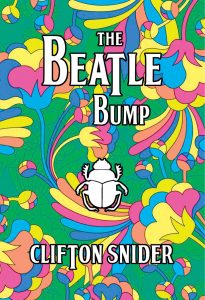Poetry: ‘If We Travel To A City’ & ‘The Thing About Snowflakes’ by Marc J. Cid

If We Travel to a City
If we travel to a city
I will not want to leave
until my bones ring
with the rhythm of its streets
the cadence of its concrete
the chatter of its cobblestones
Until four corner skylines tattoo
the inside of my eyelids
Until I’ve tasted a city’s morning breath
cold, coughing, the calligraphy
of its awakening
the lullaby litanies
of its sunset shuffle
If we travel to a city
I will want to stay until
my heart files its name
under “Home”
The thing about snowflakes
is that when we are stepped on
we get flatten-packed into solidarity,
become aerodynamic substance amassing inertia.
When they try to crush snowflakes, we gather
side by side and back to back and face to face,
merging into snowballs. And the thing about snowballs
is that we ferment momentum, generate acceleration, grow gargantuan.
When they stomp down on snowflakes
they call down the blizzard,
and soon they will reap the avalanche.
So let them clench their tiny hands around crybaby sized ski poles
and try to ride this storm out.
Maybe they’ll make it to the bottom of the mountain.
I doubt it, but even if they manage that much,
our white powder demolition stampede
will swallow the streets and drown the town.
And the thing about snow is that it’s H20
by a particular name and physical state,
and the thing about H20 is that whether
raindrop or ice crystal or snowflake,
H20 when flying free deconstructs light,
reveals white light is comprised of every color.
And the thing about people, is that we aren’t photons,
and when you combine us together we do not blend into white.
We are a hundred thousand shades of brown,
an earthen gradient, a topsoil mosaic, every stratum stacked
atop the previous ever more vibrant, ever more diverse, howling with the sound
of bitten back words finally freed, intergenerational grievances given voice spiraling skywards
where they have taken away so many stars from the night, but have you ever driven
out from under the excess umbrella of domesticated lightning, have you ever seen
the creamy glean of infinity in the Milky Way, will multitudes and myriads
and countless totalities of stars, of cultures clashing clinking combining frighten you like it does
these jackbooted snowflake stompers, unheeding, being swallowed
by the shadows of storm clouds they have summoned with their self-servicing, dead-end dance?
Or will you and I and all of us remember this time, when the thaw begins,
that none of our colors fade, all these colors of ours do not run.
Or will you and I and all of us remember this time, when the thaw begins,
that none of our colors fade, all these colors of ours do not run.
________________
Marc Cid 
is a poet currently living in Downey, California. He tends to write and perform poetry that leaves his listeners split on if they’re supposed to laugh or not, and to feel kind of bad if they do laugh. This is intentional. The trick to doing this without being a stereotypical offensive comedian is in taking care to note who is placed at the end of the punchline.



